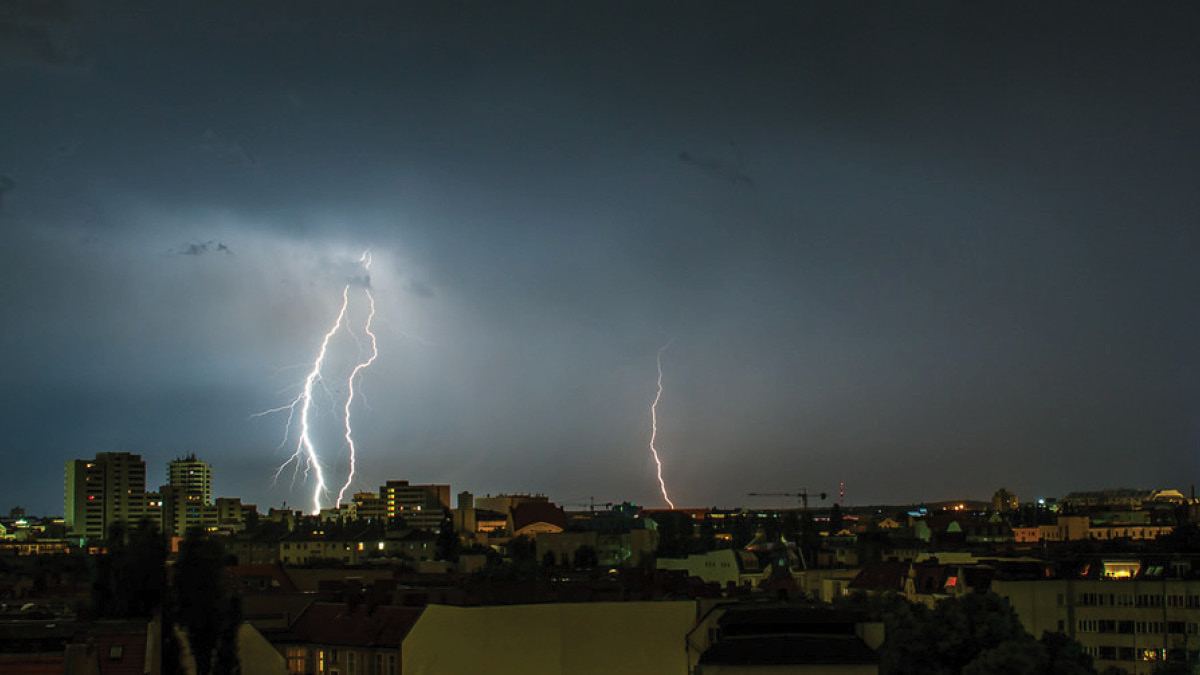Into the storm: Flying hazards caused by thunderstorms

For pilots, thunderstorms are one of the most hazardous conditions they can encounter. All thunderstorms have the potential to produce severe turbulence, icing, hail, lightning and other hazards that can negatively affect the aircraft and its performance. Cumulonimbus clouds, which are large, tall clouds that are dark on the bottom, bring thunderstorms. Referred to as thunderheads when observed from a storm, the Cumulonimbus is a dense, towering vertical cloud, forming from water vapor carried by powerful upward air currents.
Knowledge of thunderstorms and the associated hazards with thunderstorms is critical to the safety of flight. As a pilot, it’s important to understand and respect the many hazards these storms can produce.
Turbulence – During thunderstorms, turbulence can occur in and around Cumulonimbus clouds. Pilots need to pay special attention to them particularly on approach and take-off because turbulence can lead to overstressing the airframe. Turbulence can also cause items in the cabin to be thrown around and pressure instruments may experience lag and even give false readings.
Icing – Severe icing can occur in clouds between 0 and -45° Celsius and especially between -3° to -10° C. High concentrations of large supercooled water droplets can lead to severe clear icing on the airframe very quickly. Carburetor icing can occur at temperatures between -10° C and +30° C.
Hail – Hail can cause damage to the skin of an airframe. You may come across hail at any height in and underneath a Cumulonimbus cloud. Hail can be experienced beneath the anvil outside of the cloud as well.
Lightning – One of the main concerns about flying in bad weather is lightning. You’re most likely to come across lightning within 5,000 ft or 1700 m of the freezing level in a part of the cloud that usually has a temperature between -10° C and +20° C. So, if lightning is within 5,000 ft, you can expect the following effects: First of all, the pilot can be temporarily blinded. The compass may also need to be re-swung. The automatic direction finder, or ADF, can become unreliable and might even point into the storm. And if the airframe is struck by lightning, you’ll see damage to the skin.
Pressure Variations – Large pressure variations can occur in and around Cumulonimbus clouds. Changes to the QNH/QFE can lead to errors in the indicated height of + or – 1000 ft or + or – 300 meters. These, together with severe turbulence and strong winds can give very dangerous conditions near the ground.
Microbursts – A microburst is a small concentrated downburst that produces an outward burst of strong winds at or near the surface. Strong downdrafts of cold, dense air can come down from high levels within a Cumulonimbus cloud at speeds greater than 1000 ft per minute and in some extreme cases, even 6000 ft per minute. Microbursts are usually restricted to an area of three nautical miles or 5 km from the cloud. Any greater and they are called macrobursts. Usually, these involve rain or hail falling as well, but not always. As the air hits the ground, it spreads out and moves away from the cloud at speeds of up to 50 knots horizontally.
On approach or takeoff, an aircraft can experience strong headwinds, which can cause an increase in performance and airspeed. As a result, the pilot will reduce power to maintain the speed and lower the nose to recapture the glide path. But the aircraft can also be exposed to massive downdrafts, giving the aircraft very low power settings, a decaying airspeed and massive loss of lift. At an even lower altitude, the aircraft experiences tailwinds which will significantly reduce the performance and possibly even cause the aircraft to contact the ground before reaching the runway.
A warning sign of a microburst is dark streaks of precipitation falling from beneath the cloud but not reaching the ground. Microbursts are most commonly found in association with summer air mass thunderstorms where surface conditions are dry. It's important to keep in mind that sometimes microbursts can be found under benign cumulus clouds as well.
Water Ingestion – If the speed of updrafts approaches or exceeds the terminal velocity of falling raindrops, the resulting high concentrations of water can cause problems for turbine engines due to water ingestion. The result may be engine flameout or structural failure in extreme cases.
Tornadoes – These are usually associated with severe thunderstorms or tropical revolving storms, in particular those found in the Midwest of the United States. Wind speeds within tornadoes can exceed 200 knots and the diameter of the vortex is typically less than 300 meters with an average of 100 meters.
Remember, as a pilot you should have a good idea about the weather before the flight and be on the lookout for adverse weather such as thunderstorms. So be prepared and have a safe flight.
welcome aboard the new airside
We took our community to the next level with an elevated look, innovative features, and new tools.



